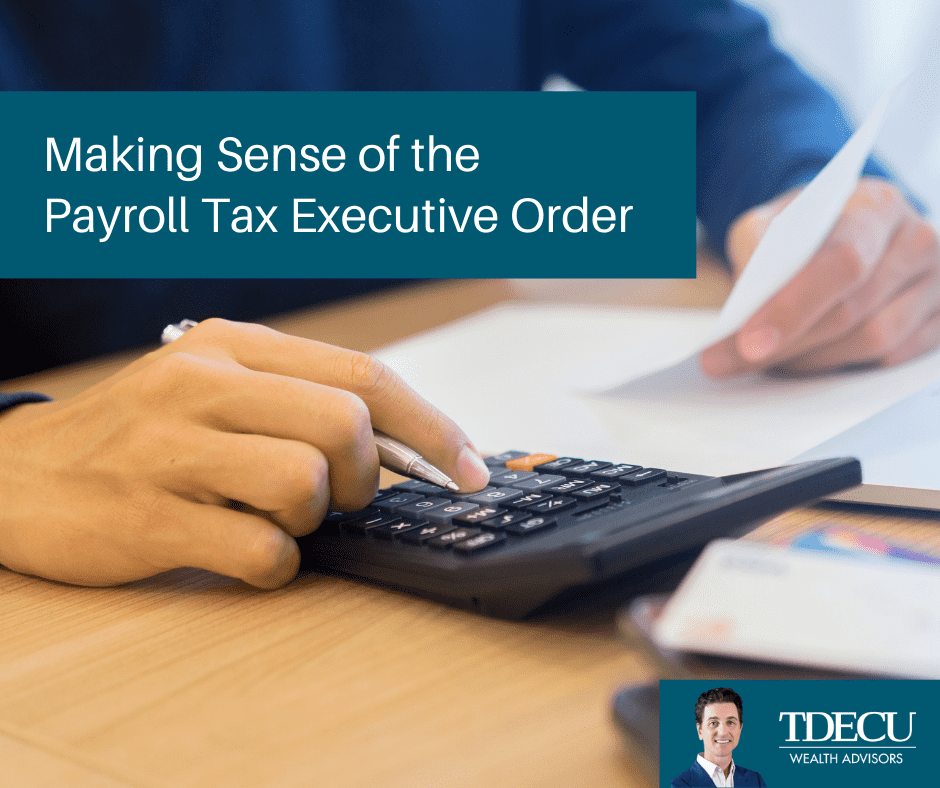After negotiations for another stimulus bill stalled for two weeks, President Trump issued an executive order suspending the collection of Social Security payroll taxes from September 1st through December 31st, while hinting that it might go beyond that time frame too. It would impact those making less than $4,000 for any bi-weekly pay period or about $104,000 annually.
While the left and many on the right were not fans of the payroll tax cut for lots of reasons, there is one very real pitfall that might come into play later, including that the deferred taxes might have to be repaid.
Whether you agree or not with the executive order, however, if you have a paying job – and there are still roughly 18 million unemployed and 30 million collecting unemployment benefits – then your paycheck might be bigger for the rest of the year.
Social Security Taxes
- As you likely know, every time you get a paycheck:
7.65% of your wages are subtracted from your paycheck and go to Social Security and Medicare (6.2% for Social Security and 1.45% for Medicare). - Your employer pays the same amount of tax.
President Trump’s executive order halts the Social Security portion of your ordinary payroll taxes (6.2%).
How Much Money?
Here are a few quick examples:
- If you make $10/hour and work 40 hours/week, you will keep about $25 more per week or $446 from September 1st through December 31st.
- If you make $15/hour, you will keep about $37 more per week, or $670 from September 1st through December 31st.
- If you make $25/hour, you will keep about $62 more per week, or $1,116 from September 1st through December 31st.
Critics of the Payroll Tax Cut
As with all things in Washington, everything gets criticized. There are those that say the money won’t be available quickly enough and would prefer straight stimulus payments. Others worry that the payroll tax cut only helps those that have a job and the ones that don’t have a job need the help more. Then of course there is the worry of bankrupting Social Security, a perennial issue no matter what side of the aisle you support.
But Before You Spend Your Tax Cuts
If you are in line to benefit from the President’s order, you need to remember that it only suspends Social Security taxes versus making them go away forever. In order for that to happen, Congress would have to agree – and that’s a tall order.
Yes, the President has said he’s looking into the possibility of eliminating the suspended taxes if he’s elected, but wiping your tax-suspension-slate clean might not be possible (and of course he might not be elected). Further, there are likely to be some companies that simply decide to continue withholding so that they aren’t faced with a really large bill later on.
As such, those impacted by this executive order need to think about the impact to their cash flow today as well as toward the end of the year.
Have specific questions? Don't hesitate to reach out to me today
Wes Garner, CRPC
Principal Wealth Strategist
(281) 269-8669
wgarner@tdecu.org

Important Disclosures
All information is believed to be from reliable sources; however, LPL Financial makes no representation as to its completeness or accuracy.
This information is not intended to be a substitute for specific individualized tax advice. We suggest that you discuss your specific tax issues with a qualified tax advisor.
This article was prepared by RSW Publishing.
LPL Tracking 01-05048224
